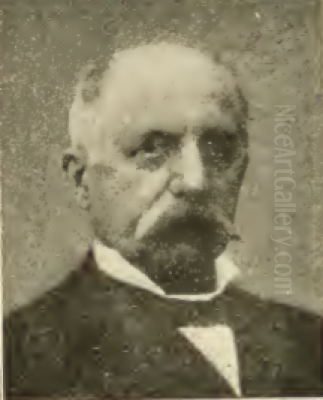
Hubert Bellis stands as a significant figure in the rich tapestry of 19th-century Belgian art. Born in the vibrant city of Brussels in 1831, he dedicated his artistic career almost exclusively to the genre of still life, achieving considerable renown both domestically and internationally before his passing in the same city in 1902. His meticulously crafted paintings, often depicting luscious fruits, vibrant flowers, and intriguing seashells, captured the attention of critics and the public alike, securing his place within the lineage of Belgian painters who excelled in capturing the beauty of the inanimate world.
Bellis's journey into the art world began with formal training at the prestigious Brussels Academy of Fine Arts. This institution provided him with a solid foundation in the academic principles of drawing and painting. His education was further enriched under the tutelage of François-Joseph Navez, a prominent Belgian painter known for his Neoclassical style and his influential role as a teacher. Navez, himself a student of the great Jacques-Louis David, would have instilled in Bellis a respect for classical composition and technical precision, even if Bellis ultimately diverged towards a different genre and stylistic influence.
Following his time at the Academy, Bellis continued to hone his skills by working in the studio of Henri de Coene. While perhaps less internationally famed than Navez, de Coene provided another environment for Bellis to develop his craft. It was during these formative years that Bellis made a conscious decision to specialize in still life painting. This was a notable choice in an era where historical painting often held the highest prestige within academic circles. His dedication to this genre proved fruitful, leading to a successful and respected career.
Artistic Style and Dutch Golden Age Influences
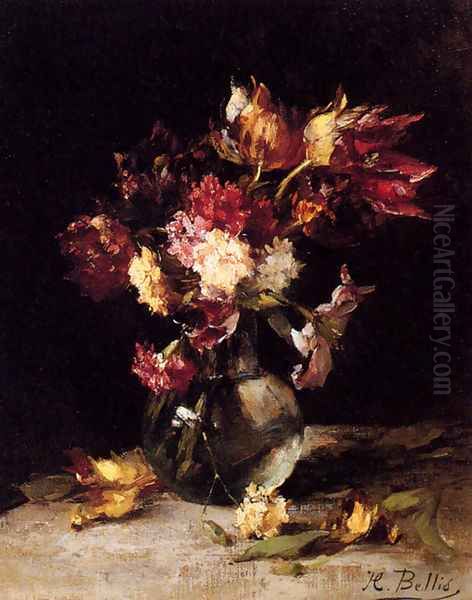
The most defining characteristic of Hubert Bellis's art is its clear stylistic debt to the masters of the Dutch Golden Age. The 17th century saw an explosion of still life painting in the Netherlands, with artists achieving unprecedented levels of realism and symbolic depth. Bellis deeply absorbed the lessons of these predecessors, particularly evident in his sophisticated approach to composition, his nuanced use of color, and his masterful handling of light and shadow (chiaroscuro).
His compositions are often carefully balanced, drawing the viewer's eye across arrangements of objects that feel both natural and deliberately placed. He learned from artists like Willem Kalf or Jan Davidsz. de Heem how to create a sense of depth and texture through the careful overlapping of forms and the rendering of different materials. Whether depicting the soft bloom on a grape, the delicate translucency of a flower petal, or the hard, iridescent surface of a seashell, Bellis displayed remarkable technical skill.
Bellis often employed a specific color strategy noted by observers: contrasting warm backgrounds (perhaps rich wood tones or earthy hues) with cooler tones for the primary subjects. For instance, deep blue or black seashells might be set against backgrounds featuring shades of orange or grey-brown. This juxtaposition enhances the visual impact of the objects, making them stand out with greater intensity and three-dimensionality. His palette, while rich, often maintained a sense of harmony and realism consistent with the Dutch tradition, avoiding the more radical color experiments of later movements like Impressionism, which was developing during the latter part of his career with artists like Claude Monet and Pierre-Auguste Renoir.
The play of light is crucial in Bellis's work. He skillfully manipulated light sources, often directional, to highlight textures, define forms, and create a tangible sense of atmosphere. This focus on light and shadow, reminiscent of painters such as Pieter Claesz or Willem Claeszoon Heda, imbues his still lifes with a quiet drama and a heightened sense of realism that greatly appealed to the tastes of his time.
Subjects and Themes
While firmly rooted in the tradition of still life, Bellis brought his own sensibility to the genre. His most frequent subjects were arrangements of fruit, flowers, and seashells, often presented with an air of abundance and natural elegance. Grapes, pears, apples, and strawberries feature prominently in his oeuvre, depicted with a verisimilitude that makes them almost tangible. These fruit pieces often evoke the 'pronkstilleven' (ostentatious still life) tradition of the Dutch Baroque, celebrating the bounty of nature.
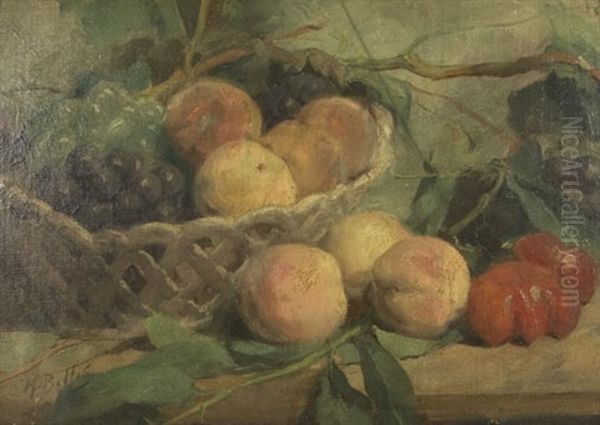
Flowers were another favoured subject. Works like the specifically mentioned Still Life: Tulips and Carnations in a Vase showcase his ability to capture the delicate structure and vibrant colours of blooms. He treated flowers with the same meticulous attention to detail as his fruit, rendering petals, leaves, and stems with botanical accuracy yet artistic flair. His floral pieces connect him to a long line of flower painters, including Dutch masters like Rachel Ruysch.
Seashells also appear regularly, allowing Bellis to explore different textures, forms, and the subtle iridescence of mother-of-pearl. These subjects, popular since the cabinets of curiosities of the Renaissance and Baroque periods, offered a chance to display technical virtuosity in rendering complex surfaces and reflections.
Interestingly, while overwhelmingly known for still life, the provided information notes that Bellis also produced some oil paintings depicting village scenes in snow and even treehouses. These excursions into landscape or genre elements, though seemingly less common, suggest a broader artistic interest, even if his reputation rests firmly on his still life output. Furthermore, Bellis occasionally updated the traditional still life by incorporating contemporary objects, such as modern glassware or cutlery, subtly bridging the gap between historical tradition and the realities of 19th-century life.
Representative Works
Identifying specific masterpieces helps solidify an artist's legacy. For Hubert Bellis, two works are explicitly mentioned as representative: Still Life: Tulips and Carnations in a Vase and An Overturned Basket of Fruit and Vegetables. While visual descriptions aren't provided in the source text, one can infer their characteristics based on his known style.
Still Life: Tulips and Carnations in a Vase likely presents a carefully arranged bouquet, showcasing Bellis's skill in rendering different floral textures and colours. The tulips and carnations would be depicted with botanical precision, their forms illuminated by his characteristic handling of light, perhaps set against a contrasting, subtly modulated background within an elegant vase that itself would be rendered with attention to its material quality.
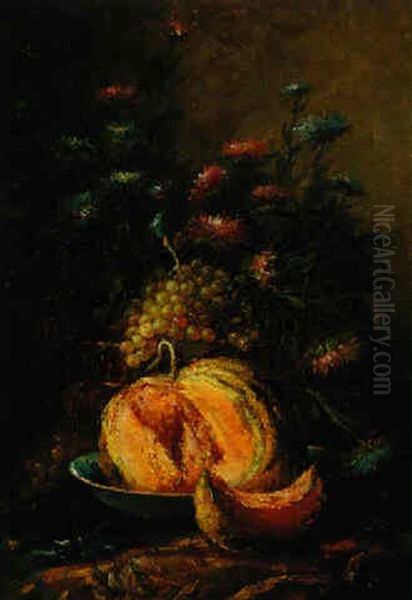
An Overturned Basket of Fruit and Vegetables suggests a more dynamic composition, perhaps evoking a sense of rustic abundance or a fleeting moment. The spilled contents – likely including his favoured grapes, apples, or pears, alongside vegetables – would offer Bellis ample opportunity to display his virtuosity in depicting varied textures, shapes, and colours tumbling across a surface. This type of composition, while seemingly casual, would still rely on underlying principles of balance and visual interest inherited from Dutch masters. Other common titles reflecting his output might include variations like Still Life with Oysters and Lemons or Still Life with Peaches and Grapes, emphasizing his focus on comestibles and natural objects.
Context, Contemporaries, and Reputation
Hubert Bellis practiced his art during a dynamic period in Belgian history and art. The 19th century saw Belgium establish itself as an independent nation and develop a distinct artistic identity. While Romanticism (with figures like Gustave Wappers) and later Realism (championed by artists like Constantin Meunier) and Symbolism (Félicien Rops, Fernand Khnopff) were major forces, traditional genres like still life continued to thrive, finding favour with the increasingly prosperous bourgeoisie.
Bellis is specifically mentioned alongside fellow Belgian artists Jean Robie, Frans Mortelmans, and Henri De Braekeleer as part of a group significant within the 19th-century decorative painting tradition. Jean Robie (1821-1910) was particularly famous for his luxurious still lifes, often featuring flowers and objets d'art, making him a direct contemporary and peer in terms of subject matter. Frans Mortelmans (1865-1936), though younger, continued the tradition of floral and still life painting into the early 20th century. Henri De Braekeleer (1840-1888), known more for his intimate interior scenes, shared a meticulous attention to detail and atmosphere found in Bellis's work.
While the provided sources explicitly state there is no documented information regarding direct competitive relationships Bellis may have had, the art world is inherently comparative. He would have been aware of, and his work judged against, not only his Belgian peers like Robie but also the ongoing influence of historical masters and the emerging trends across Europe. His adherence to a more traditional style set him apart from avant-garde developments like the Impressionism pioneered by French artists or the unique visions of Belgian innovators like James Ensor, whose work radically broke from academic norms.
Bellis achieved considerable success during his lifetime. His paintings were well-received by both the public and art critics, earning him a "huge reputation," according to the source material. His work was exhibited not only in Belgium but also internationally, including in Argentina, where it was noted for its artistic sensibility. Museum collections in Antwerp, Brussels, Liège, and Luxembourg acquired his works, signifying official recognition and cementing his status.
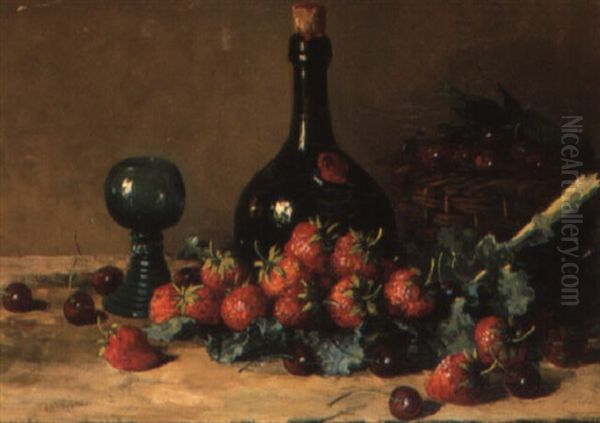
However, critical reception wasn't universally laudatory. A review in the New York Times, referenced in the source, apparently found some of his works lacking in "artistic feeling," suggesting that while his technical skill was undeniable, perhaps some critics sought more overt emotional expression or innovation than his carefully rendered still lifes offered. Despite such occasional critiques, the overall assessment points to a highly respected artist who excelled within his chosen specialization.
Legacy and Art Historical Position
Hubert Bellis occupies a solid and respected position within Belgian art history, primarily as a leading exponent of still life painting in the latter half of the 19th century. He successfully carried forward the technical excellence and aesthetic principles of the Dutch Golden Age masters, adapting them for a contemporary audience. His dedication to realism, his mastery of light and texture, and his refined sense of composition ensured the enduring appeal of his work.
His role within the Belgian "decorative painting tradition," alongside figures like Robie and Mortelmans, highlights the continued importance of genres focused on beauty, craftsmanship, and the intimate portrayal of objects, even amidst the rise of more socially conscious or avant-garde movements. Bellis demonstrated that traditional subjects, when executed with skill and sensitivity, could still command respect and admiration.
The presence of his paintings in significant Belgian museum collections underscores his lasting importance. He represents a continuation of a strong Flemish and Belgian tradition of still life painting that stretches back centuries to artists like Osias Beert and Clara Peeters, bridging the gap between the old masters and the modern era. While perhaps not a radical innovator in the vein of some of his contemporaries, Hubert Bellis perfected his chosen craft, leaving behind a body of work celebrated for its technical brilliance, aesthetic refinement, and quiet beauty. His paintings remain a testament to the enduring power of still life to capture the richness of the visible world.